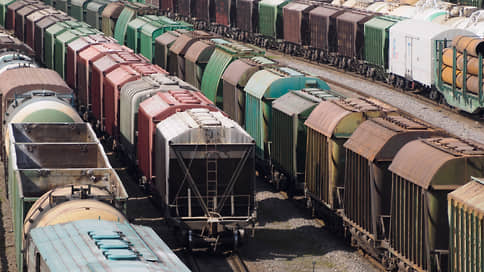Analysts expect an increase in grain loading amid a shortage of stock
[ad_1]

Grain transportation, contrary to the general trend, increased throughout 2023, and will continue to increase in 2024, experts expect. In their opinion, despite the high base of last year, according to the results of the current year, grain loading will increase by 3–5%. However, according to the observations of analysts, transportation in this segment is also hampered by an increase in car turnover and a shortage of the fleet.
Grain loading, one of the few steadily growing cargo categories, may grow by 3–5% by the end of 2024, even relative to the record figures of 2023, analysts at the Operators Information Center (OIC) believe.
In 2023, grain loading on the railway network increased by 8.9 million tons, or 32.8%, Russian Railways reported. As explained in the ISC, the main contribution to the increase in grain transportation was made by export routes – an increase of 79%, to 23.6 million tons. The main share of export traffic – 65% – traditionally remained with the ports of the Azov-Black Sea Basin (ASB), which showed the largest absolute increase – 6.5 million tons by 2023 (plus 75%, an increase to 15.2 million tons). Domestic grain transportation decreased by 10%, or 0.9 million tons. Based on the results of three months of this year, grain transportation also shows an increase of 8.3%, with faster growth in exports (10.9%) and a consistently high share of ACB in loading (70.7%).
“Last year, the grain truck segment was significantly influenced by the increase in the turnover of railcars on the network and the shortage of production capacity of the railcar industry,” notes the ISC. “Thus, the turnover of grain trucks in 2023 showed record values for five years, exceeding the level of 27 days. The growth by 2022 was two days, or 7%. Let us note that every additional day of turnover of grain carriers is equivalent to 2 thousand wagons that will be required to export the same volume of cargo.”
With the sufficiency of the grain carrier fleet, ICO notes the same picture as in many segments of rolling stock: a nominal surplus and a situational deficit. The ISC notes that the number of grain carriers has been continuously growing over the past five years. In 2023, the fleet increased by a record 9 thousand cars, or 16%, despite the write-off of 4.4 thousand cars. By the end of 2023, the total number of grain carriers on the network exceeded 65 thousand units. At the same time, the average annual estimated surplus of the grain truck fleet in 2023 decreased by 0.8 thousand units and amounted to 4.7 thousand, or 8%. And taking into account the unevenness and seasonality of grain transportation during periods of peak demand during 2023, the deficit of the grain carrier fleet was estimated to exceed 25% (more than 14 thousand cars), the ISC notes. “All this acts as a deterrent to the growing cargo supply of grain and mineral fertilizers,” the agency says. “Under these conditions, the share of fertilizers transported in grain carriers decreased from 25% in 2022 to 18% in 2023.” In turn, the share of grain transported in grain carriers increased from 46% in 2022 to 59% in 2023, they note.
Grain trucks in 2023 were, of course, the most in demand and popular type of rolling stock: their factory price reached 7 million rubles. a piece. Under the influence of high demand, car manufacturers switched to producing grain carriers, ceasing to produce less profitable types of rolling stock, such as platforms. By the end of the year, rates for grain carriers exceeded 5 thousand rubles. per car per day, which is significantly higher than for other non-exotic types of cars.
Now there are all the prerequisites for grain loading at the end of the year to be higher than in 2023, believes the head of Infoline-Analytics, Mikhail Burmistrov. This could be facilitated, among other things, by some unloading of the southern direction, where there is a decline in coal loading, he says, noting, however, that the refusal to load coal at OTEKO (for more details, see Kommersant on March 19 and April 1) will not last the entire year. Grain loading is also positively influenced by the growing level of shipment routing from the largest operator Demetra-Holding and the development of agrologistic routes of Russian Railways Logistics. Of course, the problem of high prices for grain trucks remains, Mikhail Burmistrov admits, but grain transportation is likely to grow.
[ad_2]
Source link





